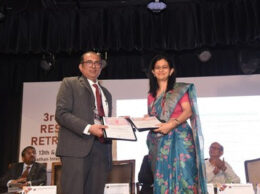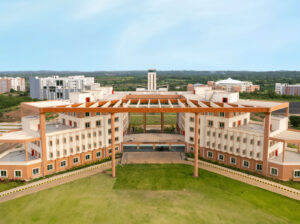London/Mumbai: QS Quacquarelli Symonds, global higher education analysts and compilers of the QS World University Rankings, released today (20 July 2016) the ranking of the best universities in the BRICS nations, especially known as emerging markets – Brazil, China, India, Russia, and South Africa. In 2016, 44 Indian higher education institutions are in the BRICS ranking table – 17.6% of the 250 places compared to 31 of 200 available places (15.5%) in 2015. However, the representation of Indian universities remains below that of China (86 universities), Russia (55 universities), and Brazil (54 universities).
Indian Institute of Science (IISC) Bangalore remains at the no 1 position among Indian universities while ranks at 6th this year at the BRICS Ranking. On the positive side, IISC Bangalore continues to compete with the best of the BRICS universities while on the negative side, it drops one place compared to 5th position in 2015 BRIC ranking. Top five places of BRIC ranking table are completely dominated by Chinese Universities: Tsinghua University, Peking University and Fudan University, University of Science and Technology China, and Shanghai Jiao Tong University.
There are 8 Indian institutions among the top 50. This is the same number as Russia, and one more than Brazil (7). It is some way behind China’s 23 top-50 universities. The most surprise pack of the tally was that the University of Delhi which posted a rise of ranking from 46th place to 41st place. This follows a sharp rise from 91st to 66th in the latest QS University Rankings for Asia.
In addition to IISc Bangalore, three IITs rank in the top 20: IIT Bombay (up to 13th from 16th), IIT Delhi (down to 15th from 13th), and IIT Madras (up one place to 19th). However, India has one fewer university in the top 20 than in the 2015 edition. IIT Kharagpur is not in the top 20 in 2016 as it is now ranked 24th.
The ranking research report highlighted India’s performance in its research excellence in university as India’s research output can compete with the best produced by China, Brazil, and Russia. Commenting on this Ben Sowter, Head of Research at QS, said: “The expanded rankings demonstrate India’s increasing strength in depth, successes that are based primarily on its research excellence. 12 of their universities score 90 or above for our citations per paper indicator, highlighting that India’s research output is able to compete with the best produced by China, Brazil, and Russia. The data we use to compile the rankings shows that 21 Indian institutions achieve full marks for hiring staff with PhD qualifications. India’s higher education institutions acknowledge that top-class research requires staff with top-class qualifications, and are reaping the rewards.”
For this year’s rankings, QS evaluated 421 universities for inclusion in the BRICS Ranking. They provisionally ranked 400, before publishing the top 250. Each year, QS Quacquarelli Symonds, global higher education analysts and compilers of the QS World University Rankings, release a ranking of the best universities in the BRICS nations – Brazil, China, India, Russia, and South Africa. It now measures performance of the top 250 universities in five nations that exert significant regional influence, and that cumulatively account for 42% of the world’s population.









